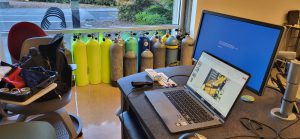
Cylinder Inspection Training: Why a Maintained Cylinder Is a Happy Cylinder
Uncover the importance of gas cylinder inspections and training. Dive deep into ensuring safety, boosting efficiency, and prolonging cylinder life.
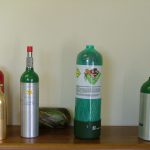 Oxygen cylinders are important in many different types of industries, from aviation and healthcare to industrial gases, but they can be dangerous. It’s important to know how they should be used safely. What do you need to know about oxygen cylinder use and how to stay safe? What are the inner workings of an oxygen cylinder? Another important aspect of oxygen cylinders is knowing what to do with them when they’re empty. They’re not disposable, obviously, so what do you do to return, refill or dispose of them?
Oxygen cylinders are important in many different types of industries, from aviation and healthcare to industrial gases, but they can be dangerous. It’s important to know how they should be used safely. What do you need to know about oxygen cylinder use and how to stay safe? What are the inner workings of an oxygen cylinder? Another important aspect of oxygen cylinders is knowing what to do with them when they’re empty. They’re not disposable, obviously, so what do you do to return, refill or dispose of them?
An oxygen cylinder consists of the metal cylinder with an inserted valve to contain the gas. Since the valve simply functions as an on or off, controlling the flow rate is essential. Without a controlled flow rate, oxygen, when in contact with a hydrocarbon, can accelerate or assist in combustion. Using a proper Oxygen regulator, designed for the specific industry, helps to control the flow of the gas. To use an oxygen system safely, you need a cylinder, valve and regulator.
Most oxygen cylinders have a storage pressure between 1800 and 3000 psi. The size of oxygen bottle determines the actual volume of gas. The regulator controls the flow, and the length of time the gas will be delivered. The higher the volume of the cylinder and lower flow rate of the regulator will increase the length of the gas supply. A medical bottle, with a rating of a few Liters Per Minute (LPM) will determine how long that cylinder will last a patient. The same principle holds true for a pilot. In both situations the time of use is imperative to someone’s health and the ability to perform a job.
Oxygen stored in a cylinder is under tremendous pressure. As long as the oxygen is contained and has a controlled release, facilities remain safe. However, if the cylinder falls, the regulator fails, or if contaminates are introduced, the cylinder can become an explosive hazard. Controlling the flow rate is handled through a properly functioning regulator. The regulator must be compatible with Oxygen. A welders oxygen cylinder will have a specific regulator based on the required flow rate. A medical regulator will generally function at a much lower flow rate, since the oxygen requirement may be much less in a medical situation. While an aviation regulator needs to function based on the number of users and the colder environment at altitude.
If stored properly, oxygen can be stored for long periods of time. The issue with long term storage is that if the metal cylinder has any moisture inside, the oxygen with the added storage pressure will allow the moisture to accelerate the corrosion process. Oxygen cylinders should be stored upright, secured and checked on a regular basis. The check might simply include checking the pressure on the cylinder, to ensure no gas is leaking from the cylinder.
When the oxygen cylinder is empty a user may have a few choices. The most common, is returning the cylinder to the gas distributor. They will then exchange the empty cylinder for a full cylinder. Some medical facilities or fire departments will refill their oxygen cylinders on site. In this circumstance the fill station technician needs to be properly trained to avoid an incident by knowing the inner workings of the fill station process and learning how to determine if a cylinder is safe to fill.
Finally, some people feel they can simply recycle a cylinder they own. This is very dangerous. The cylinder will always contain some level of gas. The valve needs to be removed safely and only a de-valved cylinder should be turned in for recycling. If the user does not know how to safely de-valve an oxygen cylinder they should take it to a gas supply company and ask them for their assistance in safely removing the valve.
Oxygen can be purchased in three separate grades; welding grade, medical grade and aviation grade. The difference between welding oxygen and medical oxygen is the purity of the oxygen. When moving to aviation grade, the gas supplier will remove moisture from the gas, to prevent freezing at altitude. But all gases are OXYGEN.
When buying oxygen the facility / user needs to consider where it will be used. How large a cylinder can be used in a given space and should consider the weight of the cylinder. If you by a cylinder for portable use, but buy it too large, it will be difficult to move. But, that must be balanced with the quantity of gas required. Having a small portable unit that only last a few minutes is not feasible. Buying the cylinder must be balanced with the use and length of required times.
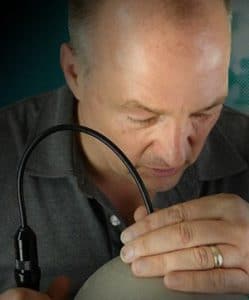
I enjoy continuing to build the business based on safety since 1999. CTS focuses on the inspection of high pressure cylinders, the maintaining of the valves and basic maintenance of high pressure compressor systems. CTS stays current in techniques and tools to train both the new and novice employee. We publish articles, update training tools and have created an APP to assist during the inspection process.
#cylinder #safety #hazmat #training #cylinderinspectiontraining #cylindex

Uncover the importance of gas cylinder inspections and training. Dive deep into ensuring safety, boosting efficiency, and prolonging cylinder life.
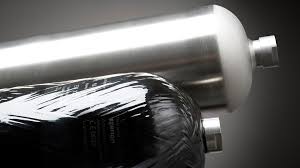
Is your composite cylinder showing signs of wear? Discover when to seek a professional repair service in our comprehensive guide.
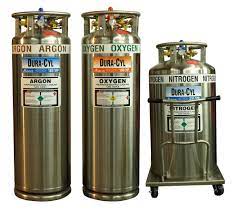
29 CFR 1910.101 intro Handling cryogenic cylinders involves working with extremely low-temperature gases that pose unique safety risks. To ensure the safe handling, storage, and transportation of these hazardous materials,
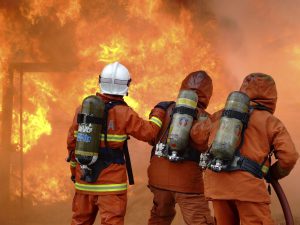
Introduction Firefighters encounter many risks while on duty, including hazardous materials and high pressure bottles. High pressure bottles are used for a variety of purposes in firefighting, including powering hydraulic